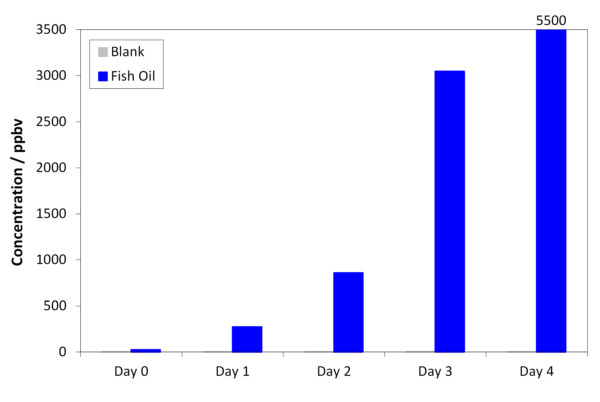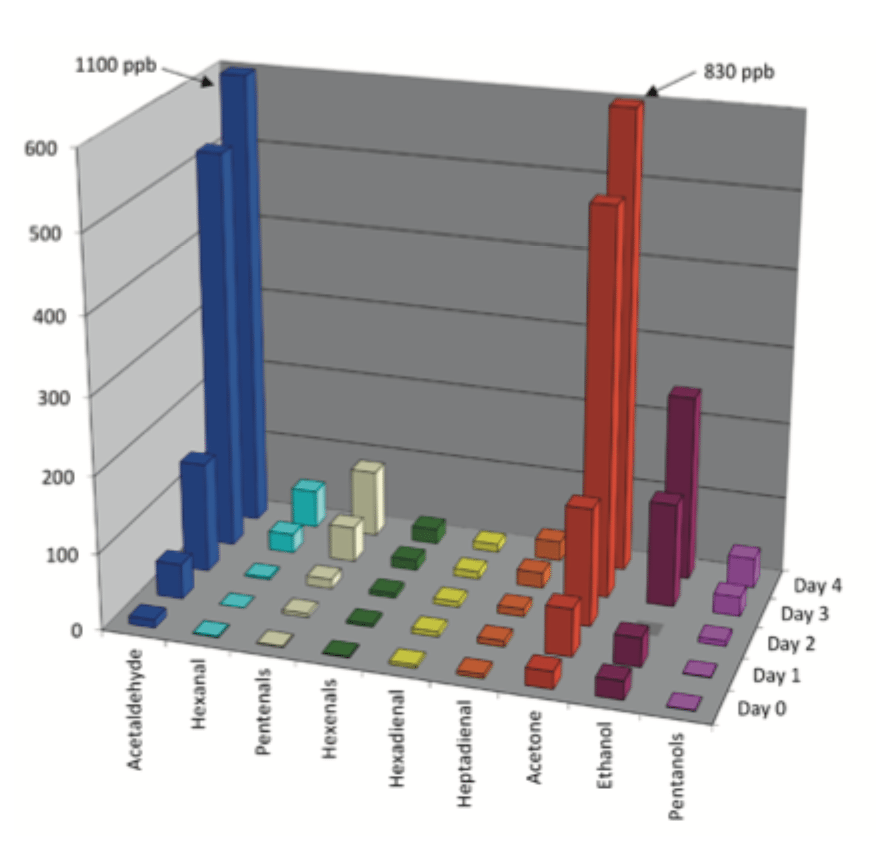Process-line or laboratory detection of fish oil oxidation is achieved extremely simply by applying SIFT-MS for instantaneous, direct detection of volatile oxidation markers
Edible fish oils rich in unsaturated fatty acids offer health benefits but are susceptible to autoxidation that affects consumer acceptance and shortens product shelf-life. Generally, greater unsaturation in the fatty acid chain means more extensive autoxidation will occur in a given time period.
Volatile aldehydes, ketones, and saturated and unsaturated hydrocarbons are formed during autoxidation. In addition to compromising flavor, they provide sensitive indicators of oxidative status for instrumental measurement. In general, propanal has been utilized as the most significant marker for fish oils. This application note demonstrates how easily autoxidation products can be detected in the headspace of fish oil using SIFT-MS.

Figure 1 shows the propanal concentration measured for fish oil samples and blanks over a four-day period. The “Day 0” measurements were made one hour after the samples were prepared (i.e. on the freshly cut capsules) and reveal a significant concentration of propanal in the fresh oil (22 ppbV).
Other volatile oxidation products are shown in Figure 2. The very volatile markers that dominate the headspace – acetaldehyde, acetone, and ethanol – are extremely significant. These compounds are not reported using traditional methods such as GC/MS, whereas they are detected readily with SIFT-MS.
The data in Figures 1 and 2 also demonstrate the selectivity of SIFT-MS. The NO+ reagent ion resolves isomeric acetone and propanal in real-time by detecting product ions that occur at m/z 88 and 57, respectively.

Figure 2 shows the other volatile oxidation products measured in fish oil samples over a four-day period.
The data presented here show that SIFT-MS very effectively detects early autoxidation of fish oil via traditional (e.g. propanal) and non-traditional marker compounds (acetaldehyde, acetone and ethanol). The simple detection of these polar, low-molecular-weight compounds with SIFT-MS arises from the unique application of ultra-soft chemical ionization (USCI) and direct headspace sampling in SIFT-MS.
The rapid, highly sensitive analysis provided by SIFT-MS is ideal for high-throughput quality assurance of fish and other edible oils. In fact, SIFT-MS enables objective, rapid sensory testing of oxidation to be applied on the process line or off-line in the laboratory, via autosampler integration.
